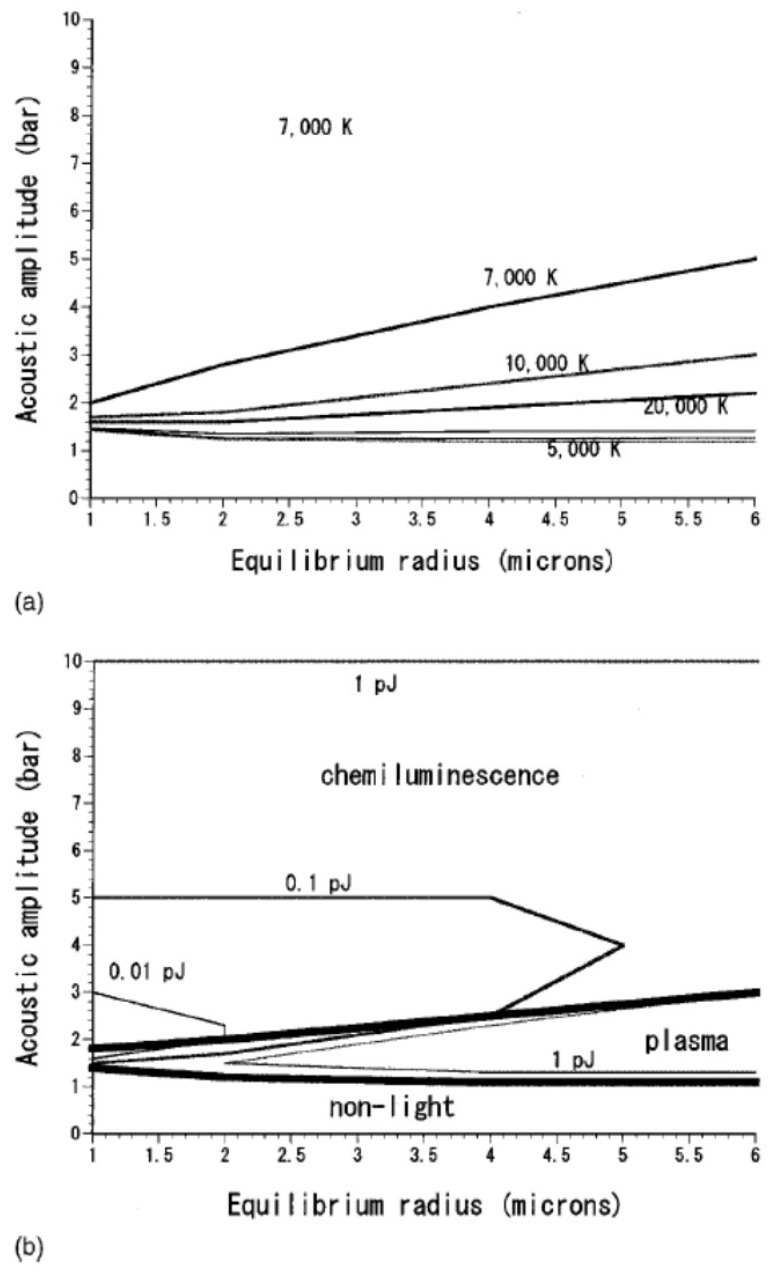Figure 10.
Results of numerical simulations of bubble pulsations for various acoustic amplitudes and equilibrium bubble radii for an argon bubble in 5 °C water irradiated by 20 kHz ultrasound [34]. (a) The bubble temperature at the collapse. The isothermal lines are from the bottom 5000, 10,000, 20,000, 20,000, 10,000, and 7000 K. Above the isothermal line of 7000 K, the bubble temperature at the collapse is independent of acoustic amplitude and is always 7000 K. (b) The mechanism of the light emission. At large acoustic amplitudes chemiluminescence is relatively strong; OH* → OH + hν, where OH* is created by the reactions O + H + M → OH* + M and OH + H + OH → OH* + H2O where M is the third body. At lower acoustic amplitudes emissions from plasma are dominant; electron bremsstrahlung and radiative recombination of electrons and ions. At very low acoustic amplitudes no light is emitted. The energy of the emitted light per bubble collapse is also shown. Copyright 2001, with the permission of AIP Publishing.

